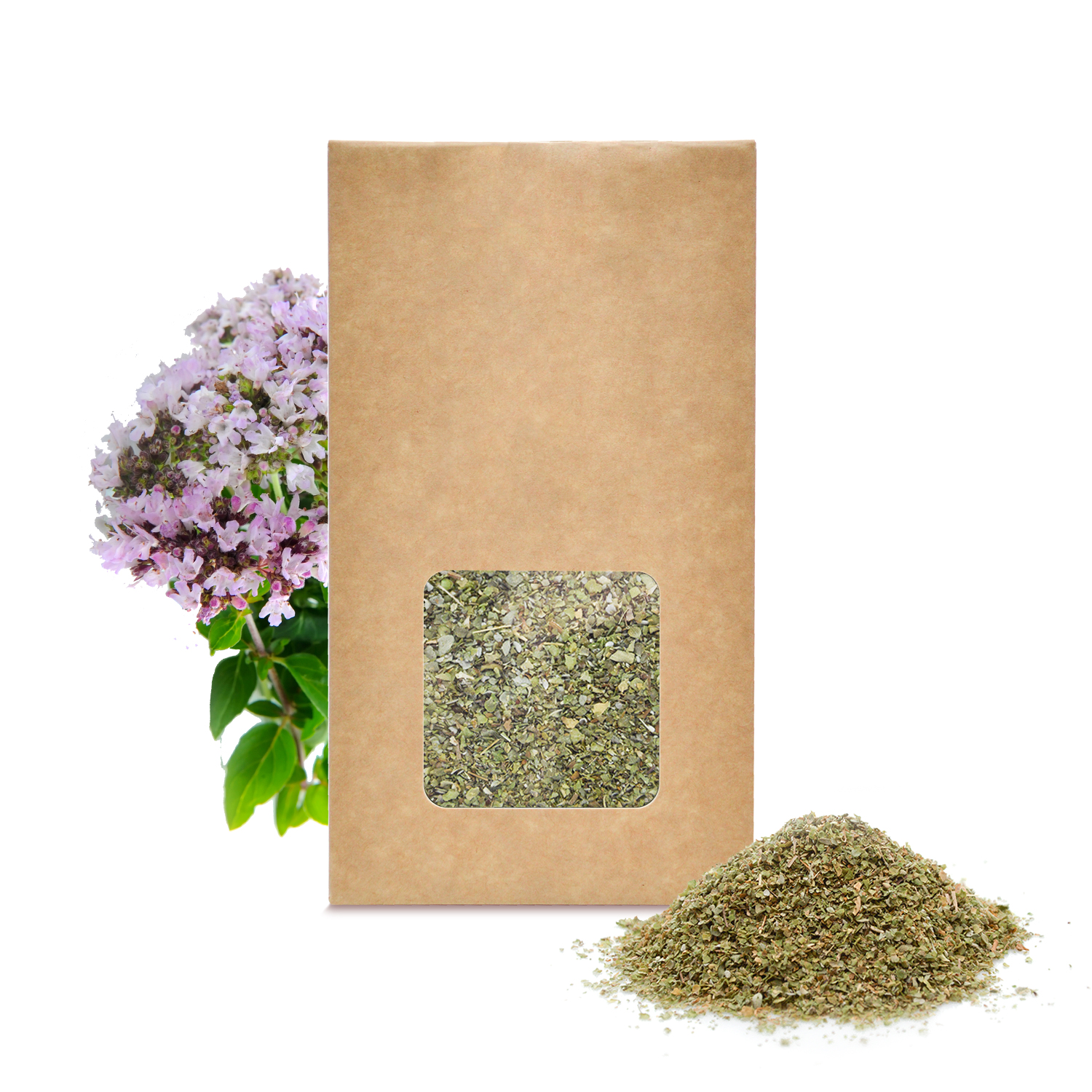
Marjoram is a condiment plant with therapeutic benefits. The leaves are used in cases of anxiety, insomnia or sleep disorders. They also have an action in cases of bronchitis, digestive spasms, digestive disorders, bloating and flatulence. Latin name: Origanum majorana L. Part of the plant: leaves.
This article was updated on 08/02/2023In case of Sleep problems, Insomnia
Recommended modes of use
In infusion
Pour the equivalent of 1 tablespoon of dry leaves per cup of hot water, then let it steep for 5 to 10 minutes. Drink 2 to 3 cups per day.
Plants often associated
In case of Dyspepsia, Bloating, Difficult digestion, Flatulence
Recommended modes of use
In infusion
Pour the equivalent of 1 tablespoon of dry leaves per cup of hot water, then let it steep for 5 to 10 minutes. Drink 2 to 3 cups per day.
Plants often associated
In case of' Anxiety
Recommended modes of use
In infusion
Pour the equivalent of 1 tablespoon of dry leaves per cup of hot water, then let it steep for 5 to 10 minutes. Drink 2 to 3 cups per day.
Plants often associated
In case of Digestive disorders, Digestive ulcer, Digestive spasms
Recommended modes of use
In infusion
Pour the equivalent of 1 tablespoon of dry leaves per cup of hot water, then let it steep for 5 to 10 minutes. Drink 2 to 3 cups per day.
Plants often associated
In case of Bronchitis
Recommended modes of use
In infusion
Pour the equivalent of 1 tablespoon of dry leaves per cup of hot water, then let it steep for 5 to 10 minutes. Drink 2 to 3 cups per day.
Plants often associated
Properties and active components
Properties
- antispasmodic (terpineol)
- anti-infectious (essential oils)
- anxiolytic
- stomachic
- antiulcer
Active components
- Essential oils: sabinene, alpha-terpineol, linalool
- Phenol acids: caffeic and rosmarinic acid
- Flavonoids
- Triterpene acids: ursolic and oleanolic acid
- Tannins
Precautions for use
No special precautions for use for this plant.
Botanical
Marjoram is part of the family of Lamiaceae. It grows in a bushy manner, and can reach approximately 50 cm in height. It is a perennial plant with rounded fluffy leaves, opposed 2 to 2 on the stem. Between June and July, Marjoram gives small groups of white flowers or purple measuring a few millimeters in length, very close together and arranged in the axils of the bracts. The whole plant is aromatic, and gives off a very pleasant smell when crushed.
She should not be confused with Oregano ! Although they look similar and their properties are quite similar, they are two different plants with different tastes. Oregano thrives in cooler climates.
This plant has an ideal climate of mediterranean climate, or temperate with a dry summer. Originally from the East of the Mediterranean basin, the main Marjoram producing countries today areEgypt then France.
Was this article helpful to you?
Average grade: 4.6 ( 159 votes)
Bibliography
Publication: van den Broucke, C., & Lemli, J. (1980). Antispasmodic Activity of Origanum compactum. Planta Medica, 38(04), 317-331. https://doi.org/10.1055/s-2008-1074884
Publication: Chishti, S., Kaloo, ZA, & Sultan, P. (2013). Medicinal importance of genus Origanum: A review. Journal of Pharmacognosy and Phytotherapy, 5(10), 170-177. https://doi.org/10.5897/JPP2013.0285
Publication: Leeja, L., & Thoppil, J.E. (2007). Antimicrobial activity of methanol extract of Origanum majorana L.(Sweet marjoram). Journal of Environmental Biology, 28(1), 145. http://www.jeb.co.in/journal_issues/200701_jan07/paper_27.pdf
Publication: Rezaie, A., Mousavi, G., Nazeri, M., Jafari, B., Ebadi, A., Ahmadeh, C., & Habibi, E. (2011). Comparative Study of Sedative, Pre-Anesthetic and Anti-Anxiety Effect of Origanum majorana Extract with Diazepam on Rats. Research Journal of Biological Sciences, 6(11), 611-614. https://doi.org/10.3923/rjbsci.2011.611.614
Publication: Bina, F., & Rahimi, R. (2016). Sweet Marjoram. Journal of Evidence-Based Complementary & Alternative Medicine, 22(1), 175-185. https://doi.org/10.1177/2156587216650793
Work : Corjon, G. (2018). Heal yourself with plants. Quitin, France: Jean-Paul Gisserot.
Work : Pierre, M. (2017). The bible of healing plants. Vanves, France: Editions du Chêne.
Work : Dubray, M. (2010). Guide to contraindications of the main medicinal plants. La Geneytouse, France: L. Souny.
Work : Fournier, PV, & Boisvert, C. (2010). Dictionary of medicinal and poisonous plants of France. Paris, France: Presses de la Cité.
Work : Luu, C., & Pelt, J.M. (2016). 250 natural remedies to do yourself. Mens, France: Living Earth.
Work : Lousse, D., Macé, N., Saint-Béat, C., & Tardif, A. (2017). The family guide to medicinal plants. Paris, France: Mango.
Work : Fleurentin, J., Pelt, JM, & Hayon, JC (2016). Good use of healing plants. Rennes, France: Ouest-France.
Work : Lieutaghi, P. (1996). The Book of Good Herbs. Arles, France: Actes Sud.
Website : EMA, Committee on Herbal Medicinal Products (HMPC), (2016). Assessment report on Origanum majorana L., herba. https://www.ema.europa.eu/en/documents/herbal-report/final-assessment-report-origanum-majorana-l-herba_en.pdf
Website : Ecumene gardens, seed artisans and nursery growers. Crop calendars. https://www.ecoumene.com/
Website : Perfume, aromatic and medicinal plant sectors Panorama 2016. (2018, June). FranceAgriMer. https://www.franceagrimer.fr/fam/content/download/57207/document/Panorama%202016%20VD%20modif%20p36%20%28003%29.pdf?version=5


